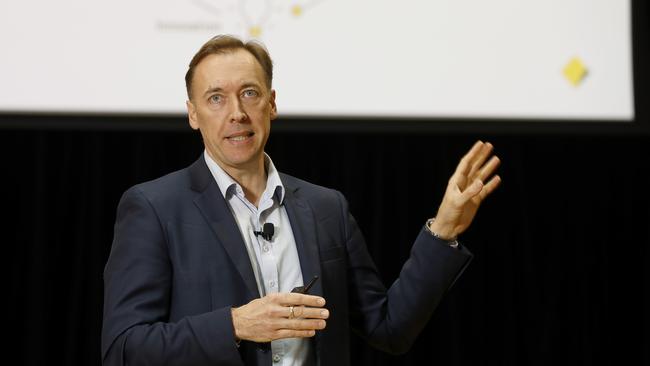CBA loan for residential solar technology powers up green energy
Commonwealth Bank is making an aggressive play against rivals in the residential solar energy financing sector.

Commonwealth Bank is making an aggressive play against rivals in the residential solar energy financing sector, as it backs a push to drive greater economic activity and for households to lower their emissions.
The move, to be announced by the nation’s largest home lender on Monday, is set to cause a stir in the market particularly as buy now, pay later operators and other banks have been dipping more into the burgeoning subset of the lending industry.
CBA is commencing with a pilot for the new green loan, which allows customers to borrow up to $20,000 via a fixed-rate charged at 0.99 per cent annually.
It targets existing home loan and investment mortgage customers and new customers to CBA. The loan can be repaid over 10 years, and doesn’t have set-up, monthly service or early repayment charges, but late fees apply if payments are not made on time.
The green loan is being touted as a way to purchase and install eligible small-scale renewable technology such as solar panels, inverters, battery packs and electric vehicle charging stations at the property used as security for the existing mortgage.
“Over the last couple of years I think so many of us realise we’ve got to do everything we possibly can and deploy every tool that we’ve got to help the economy transition into a greener state,” said CBA’s retail group executive Angus Sullivan.
“The bank feels very very strongly that we’ve got an important role to play there at scale, and our strength from a balance sheet and lending perspective, they make us uniquely qualified … We all need stimulus to get the economy pumping again, get small businesses going again.” Drawing on CSIRO research, Mr Sullivan said most customers shifting to solar would see energy bills drop by more than $500 per year, helping offset total loan repayments in the long term.
“It’s a positive impact in terms of their (borrower) overall serviceability,” he said. “It’s provable quantitatively for us that the customer will be in a better financial position.”
A credit assessment is still undertaken on a customer’s green loan suitability, but the process is expedited as it is an extension to their mortgage. Mr Sullivan said CBA conducted focus groups and research to gauge customer views on a green loan and expected “very significant” take up.

But CBA isn’t the first to wade into the renewable energy and home improvement lending market. Rival ANZ has a product in New Zealand for existing customers that offers interest-free home loan top ups of up to $5000 to finance insulation and heatpumps.
Smaller player Bank Australia has a loan with an interest rate of 4.75 per cent, to cover the installation of solar panels, and borrowers can apply for up to $6000.
Globally, lenders including the Royal Bank of Canada are tapping this market. RBC offers an interest rate discount or a rebate on a home energy audit and a qualifying purchase via a fixed-rate loan.
The Mike Cannon-Brookes-backed energy finance group Brighte built its model locally around buy now, pay later finance for products including solar panels and batteries.
Lender Plenti is among players hoping to accelerate growth and further push into areas including renewable energy loans.
More broadly, the rapid growth in rooftop solar and battery usage has sparked concerns about power grid stability in Australia, given the system has struggled to cope with the rate of renewable energy development.
Clean Energy Council’s chief Kane Thornton said: “Over 2.7 million Australians have installed solar panels on their homes, and it’s a great way to reduce your power bills and reduce your household’s carbon footprint.”
Asked if the CBA green loan was a loss leader to acquire more customers, Mr Sullivan said: “It’s not highly attractive – to say the least – from a financial perspective … the overriding imperative here was we’ve got to do whatever we can to help the economy and Australians transition.
“It’s a thankyou to our loyal customers … we all know how much this space and looking after the climate matters to all of us, and I’m sure there will be folks that look and say ‘hey that’s great I’m very happy to move my mortgage across’.”
CBA will require customers taking up the green loan buy a certified product and provide evidence of the purchase and installation, to ensure the funds are used for the intended purpose. The green loan pilot starts this month and the product goes live in May.







To join the conversation, please log in. Don't have an account? Register
Join the conversation, you are commenting as Logout